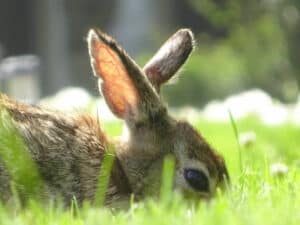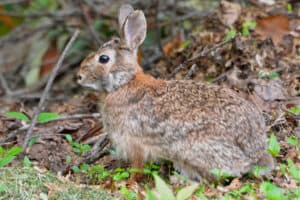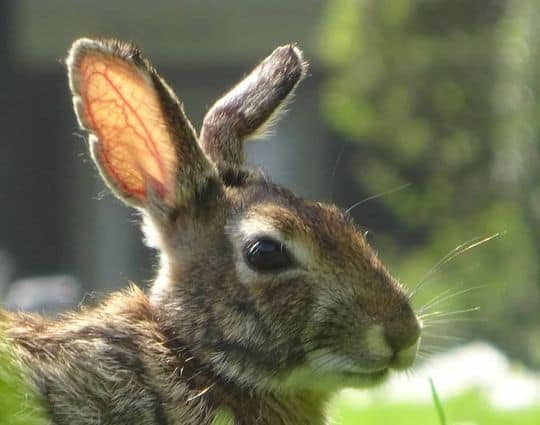I have received numerous calls, inquiries through email, and curious questions from friends and neighbors about why there are so many eastern cottontail rabbits this year. My own backyard observations and walks through my neighborhood have left me reflecting on the same question. Where once I saw a bunny or two as I walked around (and I spend more time outside than the average person given the nature of my job), I now see multiple bunnies daily in my backyard and can return from a walk seeing more than 2 dozen. The question is: are there more bunnies this year than last?
Some might point to the lack of big predators in our area or less traffic during the pandemic. BUT the real reason is right up my alley: It’s just Mother Nature.
The rabbit population, like many things in nature, is cyclical. There are boom and bust years based on environmental conditions. When conditions are right, rabbits can breed several times in one season, resulting in a potential proliferation of rabbits.

There are a lot of factors that contribute to a “boom and bust” rabbit population:
- The Availability of Food. There has been an abundance of food available for animals this year. With more people staying home, gardens, planting, and yard landscaping have proliferated, providing plentiful food sources for rabbits. The abundance and early availability of food due to the relatively mild winter led to increased reproductive productivity.
- Environmental Conditions. Baby bunnies (also called kittens) spend their first couple of weeks in a nest in the grass. Hypothermia can kill a lot of young bunnies, so less yard flooding is good for young bunnies.
- Increased Reproduction. In a normal year, only 15% to 20% of bunnies reach adulthood. This is one of the many reasons rabbits breed so prolifically. One rabbit can breed up to seven times in one year (with the season being January or February through September), and they may have anywhere from five to 12 bunnies (or kittens) per litter. A female bunny reaches sexual maturity at 2-3 months, so a bunny born in an early littler can go on to produce a couple of litters of kittens. If survivability rates fluctuate up, even a little, it can end up looking like a lot more bunnies!
- We’re More Aware. Covid has changed the patterns of many of our lives. We are home more, in nature more, and noticing wildlife much more. Rabbits enjoy being close to humans; we serve as a shield from larger animal predators. A lot of predators avoid humans, so high prey species like rabbits and squirrels live close to us, not only for the food but for protection.

So, if it seems like there are more observable rabbits this year, it may be because environmental conditions were just right this year, or it may be that you are more aware and engaged with your surroundings. This is one of the many lessons we try to foster at Sheldrake—that nature is all around us, curiosity should be encouraged and fostered, and we should all respect the natural world around us.
Best,
Jennifer
Jennifer Keefe
Executive Director
Sheldrake Environmental Center

